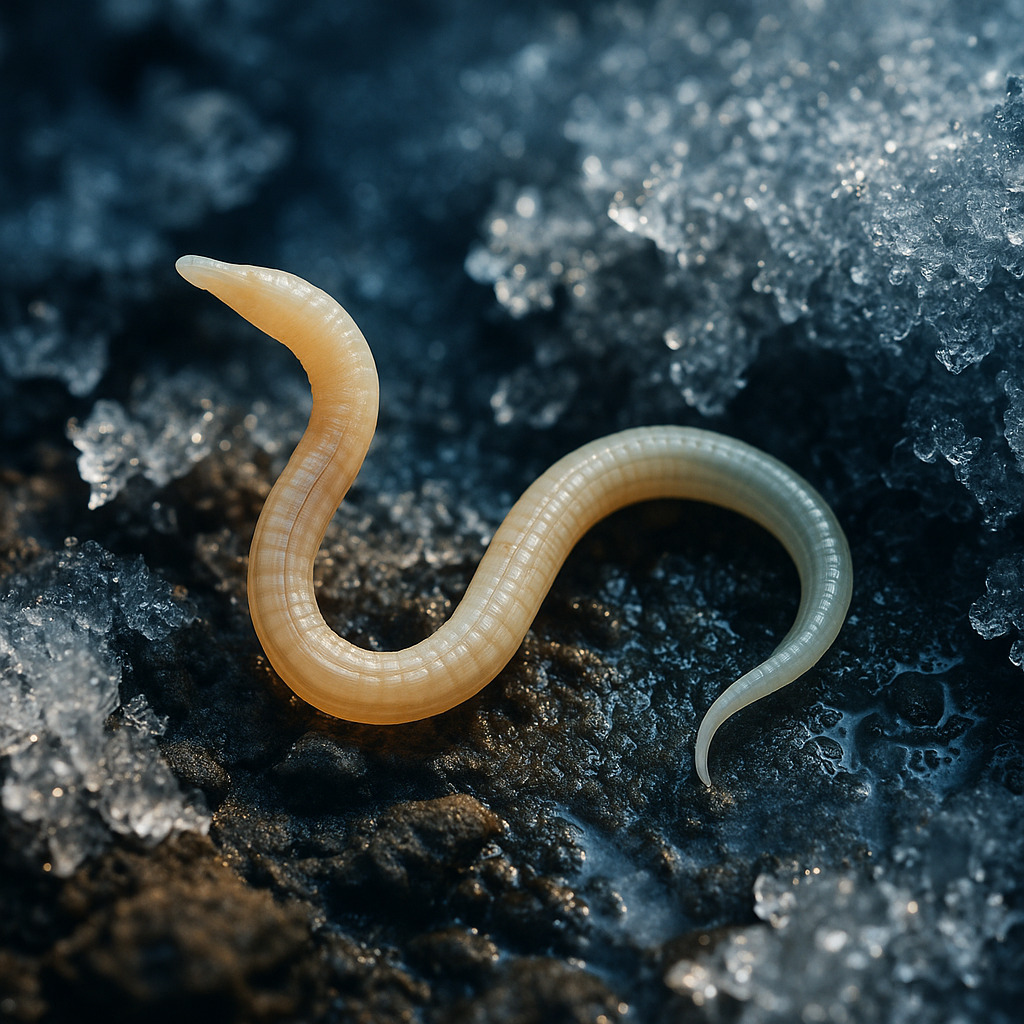The Awakening of the Ancient Worm – When Life Sleeps for 46,000 Years
What happens when a living being falls asleep before the dawn of humanity... and wakes up in our world?
It sounds like the start of a science fiction novel, but it’s entirely real: an international team of scientists has revived a microscopic worm that had been trapped in Siberian permafrost for approximately 46,000 years.
Back when mammoths roamed the tundra and humans had barely taken their first steps, this tiny organism entered a state of deep suspension. Now, after millennia of icy slumber, it's moving again. Breathing. Living.
❄️ How can anything survive for 46 millennia?
The protagonist of this story is a nematode, a type of microscopic roundworm. In 2018, scientists extracted soil samples from over 40 meters deep in the Siberian permafrost, where they discovered what seemed to be frozen, lifeless creatures.
But in the lab, something miraculous happened: the worms revived, began to move, and even reproduce. After 46,000 years, life resumed as if it had never paused. The key? A phenomenon called cryptobiosis.
🔬 A New Species: Panagrolaimus kolymaensis
Genetic analyses revealed that the worm belonged to a previously unknown species, now officially named Panagrolaimus kolymaensis, after the Kolyma River in northeastern Siberia.
Closely related to the well-known Caenorhabditis elegans, this worm possesses extraordinary capabilities. It’s not just ancient – it’s biologically exceptional, able to suspend its own metabolism in extreme conditions.
🧊 Cryptobiosis: The Deep Sleep That Cheats Death
The trick is cryptobiosis – a suspended animation where the organism halts all metabolic activity to survive extreme stress like freezing or dehydration.
This state is reversible. While some plants, tardigrades, and other nematodes can do this for weeks or years, Panagrolaimus kolymaensis held on for 46,000 years – making it the longest recorded suspended life in a multicellular organism.
It's not just impressive. It's historic.
🧪 And in the Lab? They Had Babies.
Back in the lab, the thawed worms didn’t just move. They fed on bacteria, reproduced through parthenogenesis (a form of asexual reproduction), and created generations of offspring.
They didn’t just wake up. They resumed life. As if no time had passed.
Imagine a creature falling asleep during the Ice Age... and waking up in a world of smartphones, AI, and satellites.
🌌 Why It Matters: Medicine, Space, and the Future
This isn’t just cool science trivia. The implications of cryptobiosis could revolutionize:
- Organ and tissue preservation
- Regenerative medicine
- Deep-space travel, where long-term human hibernation could become reality
And it poses deeper questions: if life can sleep for 46,000 years, what else might be lying in wait beneath the ice... or in other worlds?
👁️ A Lesson from Nature
This microscopic Siberian nematode is not a miracle. It’s a reminder. That life is stubborn. That survival is an art form. That time is not always a barrier.
Maybe the universe is full of dormant lives, frozen in time, waiting for the right moment to stir again.








Leave a Comment